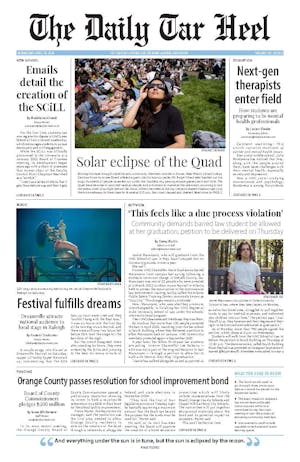Economists Eric Ghysels and Robert Healy of UNC and Duke, respectively, are not satisfied with the current plans to develop a light rail system between Orange and Durham counties.
Of particular concern to both is that the construction of the light rail will come at the expense of other forms of public transportation, such as bus routes. While this and other concerns they have are valid, the benefit the light rail system will bring to the region outweighs criticisms.
While it may seem obvious that ridership is the best metric to judge a transit system’s success, the future development that will take place within a walkable distance of new transit stations is the light rail’s biggest boon. UNC transportation planning professor Daniel Rodríguez was right to argue that “coordinating development and transit service that are mutually reinforcing is critical.”
This has proven the case in metropolitan areas across the United States that have built light rail systems in the past two decades, such as Portland, Ore. and Phoenix, Ariz. According to the town of Chapel Hill’s long range and transportation planning manager David Bonk, the 20 mile-long Phoenix light rail attracted $8.2 billion in private and public investment, thanks to proper planning. A similar quality and quantity of development could be attracted along the proposed 17.1 mile system.
Professors Healy and Ghysels’ most salient point is funds will be diverted from buses in order to pay for the construction of the light rail. Their argument — that increasing transit ridership by building a $1.6 billion light rail is not the most cost effective option — seems valid.
However, Bonk contends that bus rapid transit, light rail’s best viable alternative, is between 70 and 80 percent as costly. Once the Triangle’s light rail grows in popularity, the cost of adding more rail cars will not necessitate another operator, often the costliest input of public transportation.
The fact that Research Triangle Park is redeveloping 100 acres of residential and retail space is an exciting departure from its reputation as a worker’s destination. It is disappointing the light rail system is not planned to stop there, but that is ultimately Wake County’s decision to pass on light rail. An expedited bus route could connect the new development to the light rail’s closest station.
Triangle Transit’s light rail is likely coming to town in the next two decades. Not only is the prospect of skipping traffic on U.S. 15-501 exciting, but also the potential for high quality, dense development along the route. Nothing against buses, but riding the rails is the Triangle’s most attractive option.


